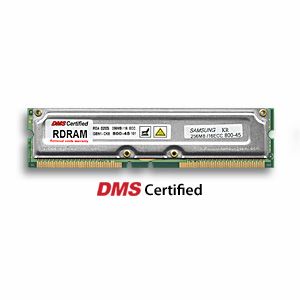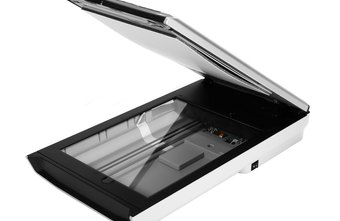Primary
Memory (Main Memory)
Primary memory holds only those data
and instructions on which the computer is currently working. It has a limited
capacity and data is lost when power is switched off. It is generally made up
of semiconductor device. These memories are not as fast as registers. The data
and instruction required to be processed resides in the main memory. It is
divided into two subcategories RAM and ROM.
Characteristics of Main
Memory
These are semiconductor memories.
It is known as the main memory.
Usually volatile memory.
Data is lost in case power is
switched off.
It is the working memory of the
computer.
Faster than secondary memories.
A computer cannot run without the
primary memory.
Secondary
Memory
This type of memory is also known as
external memory or non-volatile. It is slower than the main memory. These are
used for storing data/information permanently. CPU directly does not access
these memories, instead they are accessed via input-output routines. The
contents of secondary memories are first transferred to the main memory, and
then the CPU can access it. For example, disk, CD-ROM, DVD, etc.
Characteristics of Main
Memory
These are magnetic and optical
memories.
It is known as the backup memory.
It is a non-volatile memory.
Data is permanently stored even if
power is switched off.
It is used for storage of data in a
computer.
Computer may run without the
secondary memory.
Slower than primary memories.
ROM: It is a permanent data storage area. It stands for
Read Only Memory. It is a non-volatile memory. It does not lose the data even
after the computer shut down.
Types of ROM:
PROM: It stands for Programmable Read Only Memory. This
machine supplies an electrical current to specific cells in the ROM that
effectively blows a fuse in them. The process is known as burning the PROM. Due
to this PROM chips are often referred to as One Time Programmable (OTP) chips.
EPROM: It stands for Erasable Programmable Read Only
Memory. Ultra Violet Rays can be removing the programs from this memory. It can
be easily recognize by the clear quartz crystal window set on top of the chip.
It can erase the chip by causing a chemical reaction, which essentially melts
the fuses back together.
EEPROM/Flash Rom: It stands for Electrically Erasable Programmable
Read Only Memory. Electrical signal removes the programs from this memory.
EEROM can be erased by electrical field as well as UV rays and data can erased
bit by bit allowing only selected portion of the code to be replaced. Flash ROM
data is written in blocks of 512 bytes instead of bit by bit so writing is
faster. It is also called hybrid memory as it reads and writes data similar to
the RAM but, maintains data similar to the ROM.
RAM (Random Access Memory) is the
internal memory of the CPU for storing data, program, and program result. It is
a read/write memory which stores data until the machine is working. As soon as
the machine is switched off, data is erased. Access time in RAM is independent of
the address, that is, each storage location inside the memory is as easy to
reach as other locations and takes the same amount of time. Data in the RAM can
be accessed randomly but it is very expensive. RAM is volatile, i.e. data stored in
it is lost when we switch off the computer or if there is a power failure.
Hence, a backup Uninterruptible Power System (UPS) is often used with
computers. RAM is small, both in terms of its physical size and in the amount
of data it can hold.
Types of RAM:
Static
RAM (SRAM): The word static indicates
that the memory retains its contents as long as power is being supplied.
However, data is lost when the power gets down due to volatile nature. SRAM
chips use a matrix of 6-transistors and no capacitors. Transistors do not
require power to prevent leakage, so SRAM need not be refreshed on a regular
basis.
There is extra space in the matrix,
hence SRAM uses more chips than DRAM for the same amount of storage space,
making the manufacturing costs higher. SRAM is thus used as cache memory and
has very fast access.
Characteristic
of Static RAM
Long life
No need to refresh
Faster
Used as cache memory
Large size
Expensive
High power consumption
Dynamic
RAM (DRAM)
DRAM, unlike SRAM, must be
continually refreshed in order to maintain the data. This is done by
placing the memory on a refresh circuit that rewrites the data several hundred
times per second. DRAM is used for most system memory as it is cheap and small.
All DRAMs are made up of memory cells, which are composed of one capacitor and
one transistor.
Characteristics
of Dynamic RAM
Short data lifetime.
Needs to be refreshed continuously.
Slower as compared to SRAM.
Used as RAM.
Smaller in size.
Less expensive.
Less power consumption.
Cache
Memory
Cache memory is a very high speed
semiconductor memory which can speed up the CPU. It acts as a buffer between
the CPU and the main memory. It is used to hold those parts of data and program
which are most frequently used by the CPU. The parts of data and programs are
transferred from the disk to cache memory by the operating system, from where
the CPU can access them.
Advantages
Cache memory is faster than main
memory.
It consumes less access time as
compared to main memory.
It stores the program that can be
executed within a short period of time.
It stores data for temporary use.
Disadvantages
Cache memory has limited capacity.
It is very expensive.
EDO (extended data output) RAM
is a type of random access memory (RAM) chip that improves
the time to read from memory on faster microprocessors such as the Intel
Pentium. EDO RAM was initially optimized for the 66 MHz Pentium. For faster
computers, different types of synchronous dynamic RAM (SDRAM) are recommended.
SDRAM (synchronous DRAM) is a
generic name for various kinds of dynamic random access memory (DRAM) that are
synchronized with the clock speed that the microprocessor is optimized for.
This tends to increase the number of instructions that the processor can
perform in a given time. The speed of SDRAM is rated in MHz rather than in
nanoseconds (ns). This makes it easier to compare the bus speed and the RAM
chip speed. You can convert the RAM clock speed to nanoseconds by dividing the
chip speed into 1 billion ns (which is one second). For example, an 83 MHz RAM
would be equivalent to 12 ns.
Rambus Dynamic Random Access Memory
(RDRAM) is a memory subsystem designed to
transfer data at faster rates. RDAM is made up of a random access memory (RAM),
a RAM controller and a bus path that connect RAM to microprocessors and other
PC devices.
RDRAM uses Rambus Inline Memory Module (RIMM)
technology, which is installed in pairs, transfers data from rising and falling
clock signal edges and doubles physical clock rates. RIMM data travels on a
16-bit bus that is similar to a packet network with transmitted data groups.
Internal RIMM speeds operate from 400 MHz to 800 MHz via a 400-MHz system bus. A
standard 400 MHz Rambus is known as PC-800 Rambus.
Synchronous Graphics RAM (SGRAM) is clock-synchronized random access memory that is used for
video memory. It is relatively low-cost video memory. It uses masked write ,
which enables selected data to be modified in a single operation rather as a
sequence of read, update, and write operations. It also uses block write ,
which allows data for background or foreground image fills to be handled more
efficiently. SGRAM is single-ported. Its special features are what make it a
moderately fast form of video memory. The Matrox Mystique is an example of a
video card that uses SGRAM.
Short for Synchronous Graphic RAM,
SGRAM is a 144 pin memory module with a single port with the capability of
synchronizing with CPU bus (speeds of 83 MHz, 100 MHz, 125 MHz, and 142 MHz)
and is commonly used with computer video cards.
FPM DRAM (Fast Page Mode DRAM) was the most common kind of DRAM in personal computers. Page
mode DRAM essentially accesses a row of RAM without having to continually
respecify the row. A row access strobe (RAS) signal is kept active while the
column access strobe (CAS) signal changes to read a sequence of contiguous
memory cells. This reduces access time and lowers power requirements. Clock
timings for FPM DRAM are typically 6-3-3-3 (meaning 3 clock cycles for access
setup, and 3 clock cycles for the first and each of three successive accesses
based on the initial setup).
VRAM (Video
Random Access Memory) is
great for loading and running programs, but when you need graphics power, VRAM
is where it's at. This is the memory used to store image data that the computer
displays; it acts as a buffer between the CPU and the video card. When a
picture is to be displayed on the screen, the image is first read by the
processor and then written to the VRAM. The data is then converted by a RAM
digital-to-analog converter (RAMDAC) into analog signals that are sent to the
display. Of course, the whole process happens so quickly, you don't notice it.
Unlike most system RAM, VRAM chips are dual-ported, which means that while the
display is reading from VRAM to refresh the currently displayed image, the
processor is writing a new image to the VRAM. This prevents the display from
flickering between the redrawing of images.
VRAM is dual-ported, has about 25%
more bandwidth than standard VRAM, and typically costs less. Finally, there is
Multibank Dynamic RAM (MDRAM). This is also high-performance VRAM, developed by
MoSys, which divides the memory into divisions of 32 KB that can be accessed
individually. This makes memory transfers more efficient and increases overall
performance.
Troubleshooting
Memory:
Trouble - Switch on the machine.
Three beep tones are heard and then the computer stops or parity error is
displayed on the screen.
Cause - This problem may occur due
to improper insertion of the RAM or due to defective RAM.
Shoot:
Physically check all the memory
modules you have installed for any sign of damage.
Check for any loose connection.
If the problem is not solved then
remove module one by one, reinsert and check the same if the problem is solved.
If the problem is due to some
defective memory module then replace with new working module. You can also use
memory testing software for the same.
Trouble - Wrong Memory Size
Cause - If the machine shows wrong
memory size error on switching on it could be due to wrong setup of which
setting or wrong CMOS setup information.
Shoot:
Correct the setup switches by the
help of DIP switches or jumpers.
Connect all the memory module
property.
Reset the BIOS
Trouble - Pins of memory are dirty
or slot is rusty.
Cause - This could be due to dust in
the memory connector and slot.
Shoot:
Clean them with student eraser and
try again.
Clean the slot with brush.
Wash the pins with the pure alcohol
and try again.




0 comments:
Post a Comment